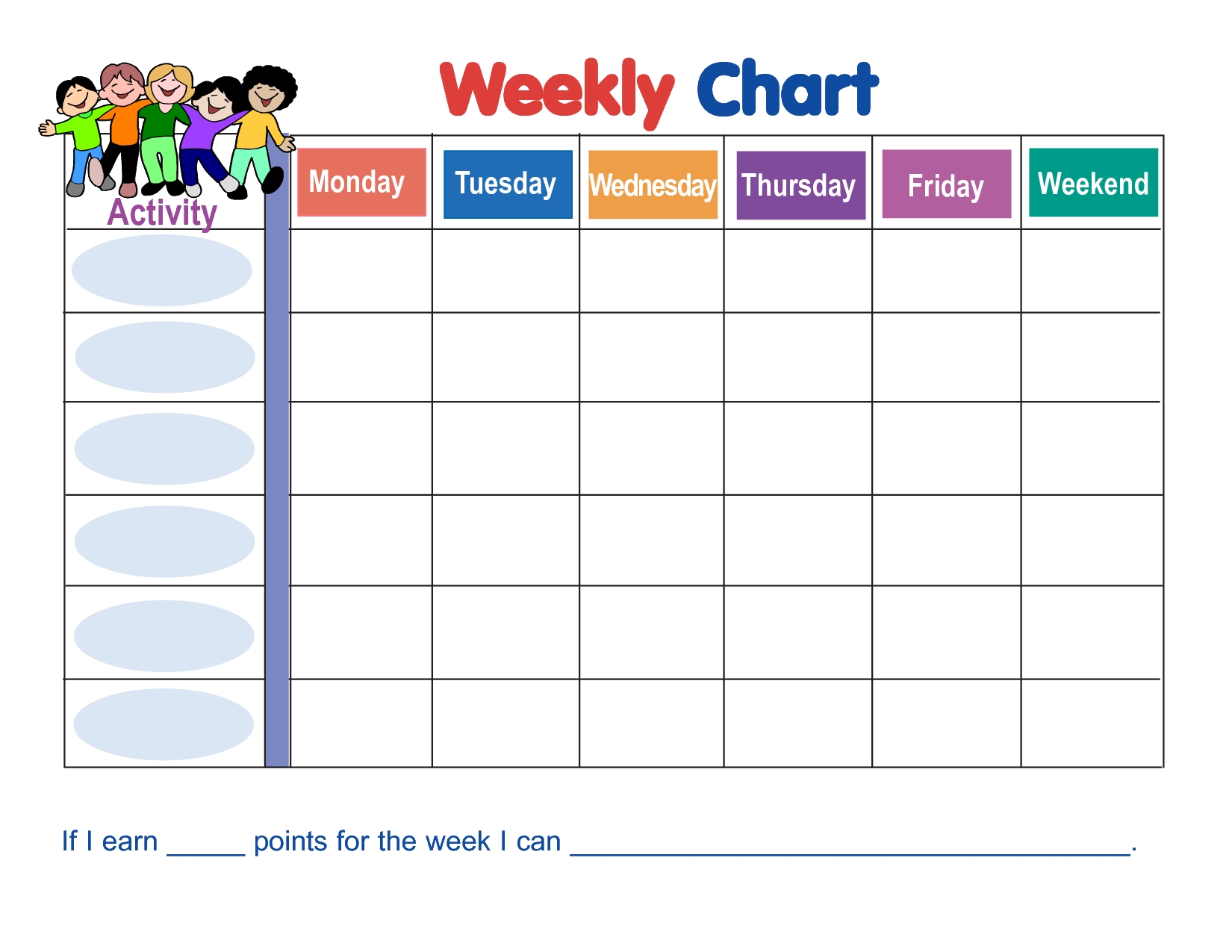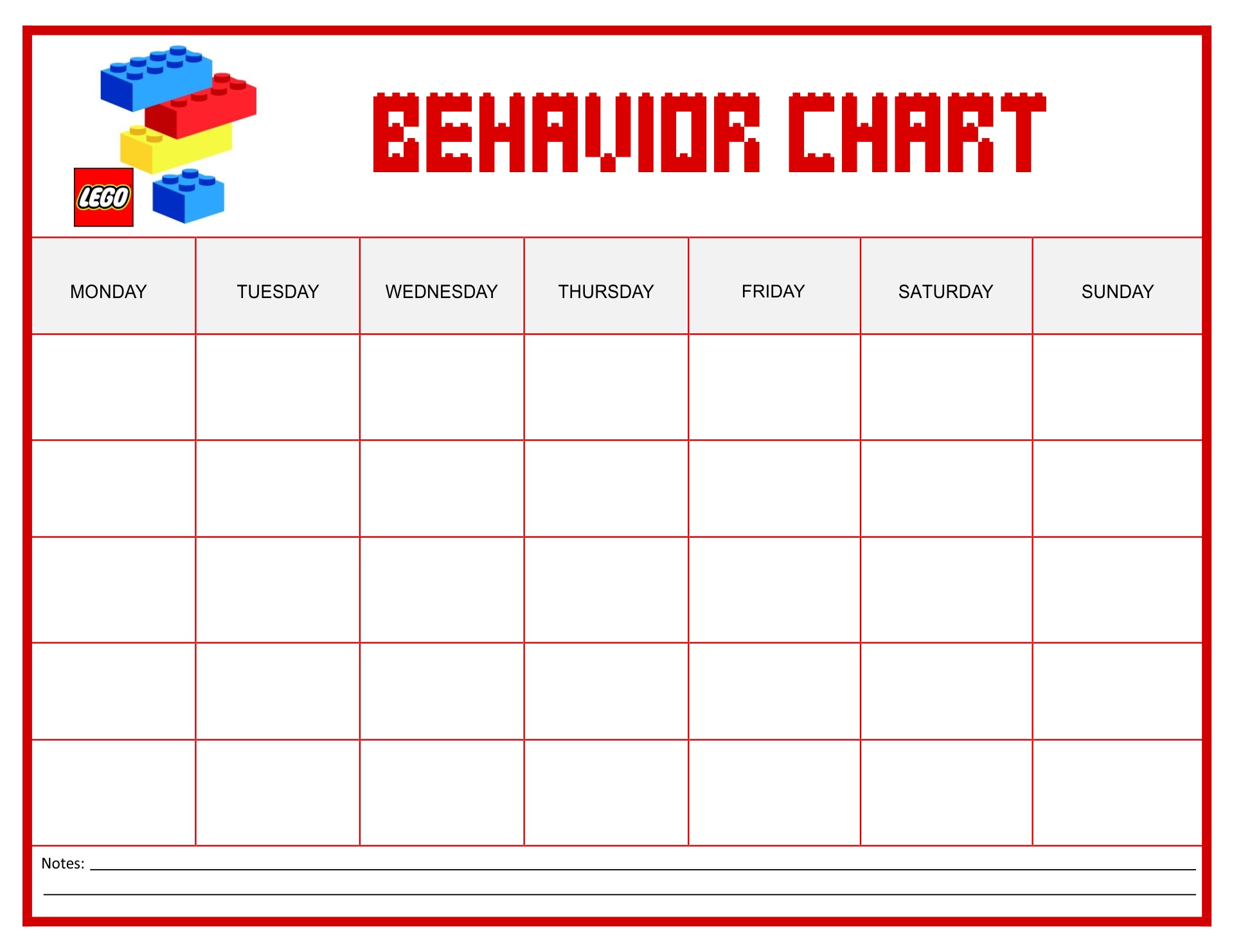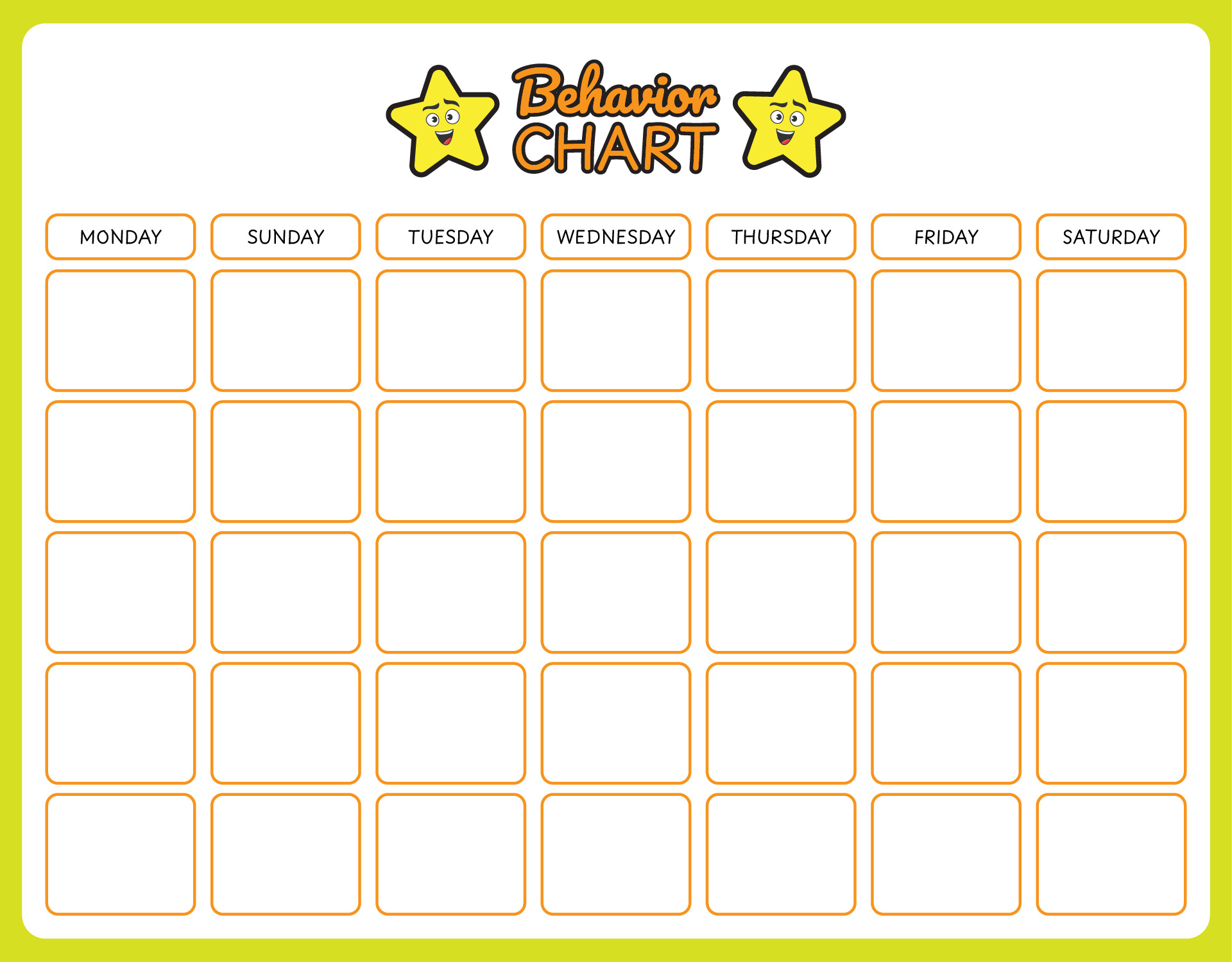Free Printable Charts for Behavior: Embark on a journey of behavior management with these handy and customizable charts that promote positive reinforcement.
Behavior charts are a powerful tool for tracking and improving behavior in various settings, be it at home or in the classroom. In this comprehensive guide, we will explore the concept of behavior charts, provide tips for finding and using free printable charts, discuss customization options, and explore alternative behavior management techniques.
Get ready to transform behavior management with free printable charts for behavior!
Introduction to Free Printable Charts for Behavior
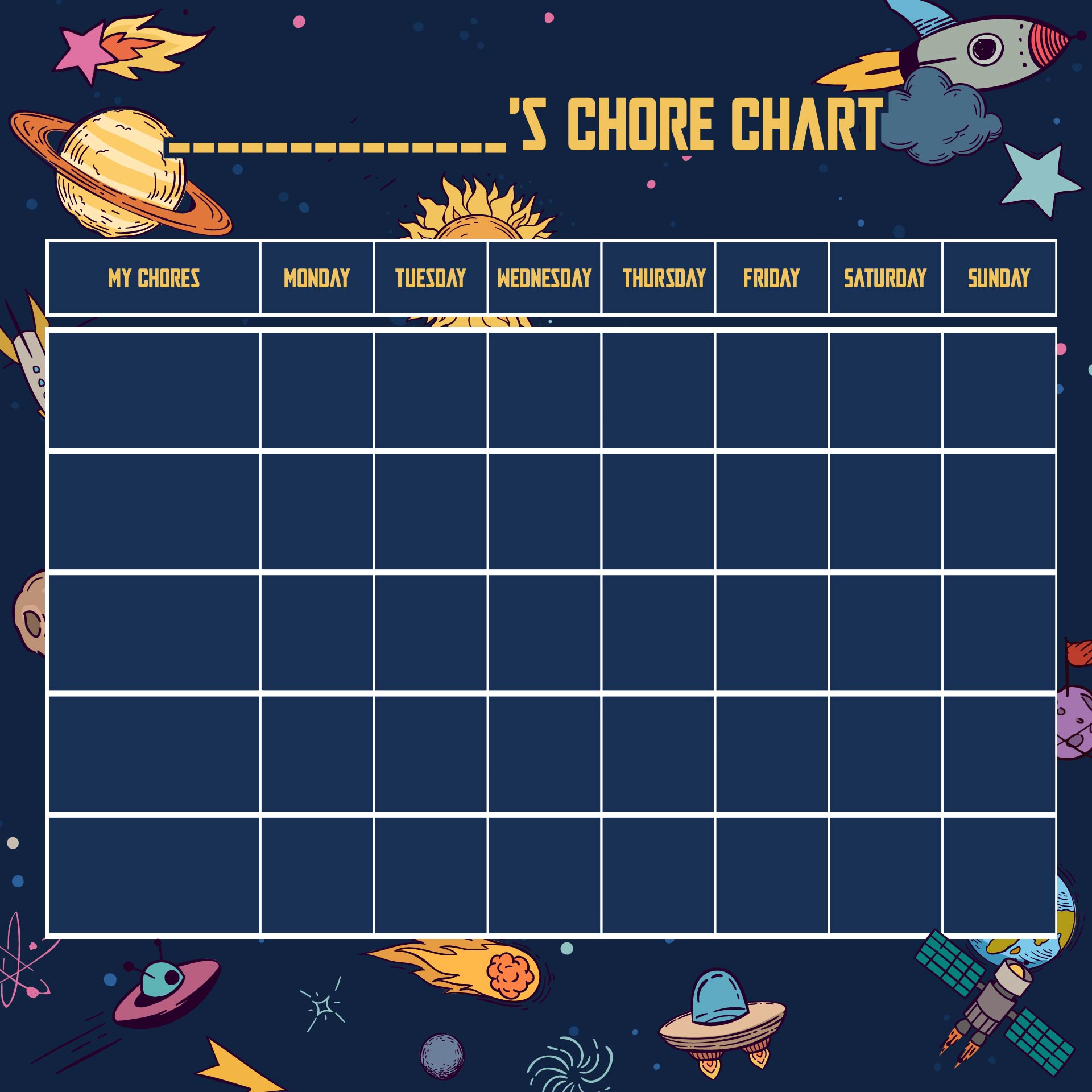
Behavior charts are tools that are used to track and manage behavior, particularly in children. They provide a visual representation of behavior patterns and help in promoting positive behavior and discouraging negative behavior. Free printable charts for behavior offer a convenient and accessible way to implement behavior management strategies.Using
printable charts for behavior management offers several benefits. Firstly, they provide a clear and visual representation of behavior, making it easier for both parents and children to track progress and set goals. The charts can be customized to suit individual needs and can be easily printed and displayed at home or in the classroom.There
are various types of behavior charts that can be printed for free. One common type is a sticker chart, where children earn stickers or other rewards for displaying positive behavior. Another type is a point system chart, where children earn points for meeting certain behavior goals.
Additionally, there are charts that focus on specific behaviors, such as a chart for tracking daily routines or a chart for monitoring homework completion.
Examples of Free Printable Behavior Charts
- A sticker chart for encouraging good manners at the dinner table
- A point system chart for completing chores
- A daily routine chart for promoting independence and organization
- A homework chart for tracking assignments and completion
How to Find Free Printable Behavior Charts
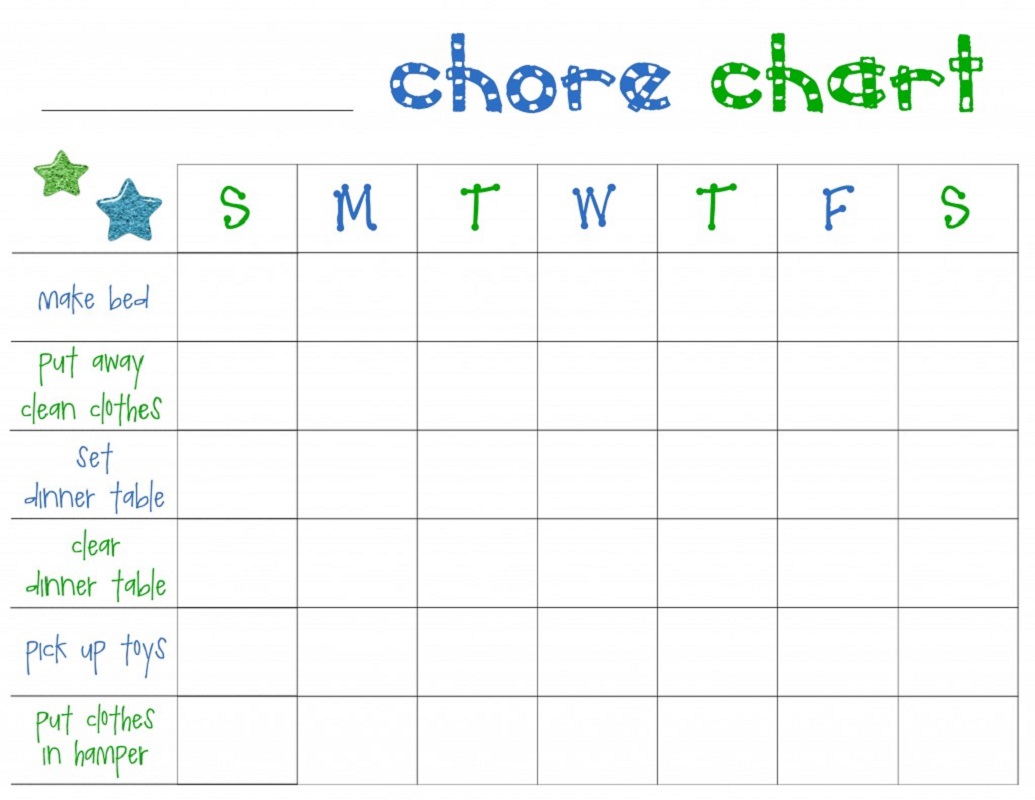
Finding websites that offer free printable behavior charts can be a valuable resource for parents, teachers, and caregivers. These charts can be a helpful tool in promoting positive behavior and tracking progress. Here are some tips and strategies for finding these charts online.
Categories or Themes of Behavior Charts
There are various categories or themes of behavior charts available for free. These charts can be tailored to suit different age groups and specific behaviors. Some common categories or themes include:
- Reward charts: These charts focus on positive reinforcement and provide rewards or incentives for desired behavior.
- Chore charts: These charts help children track their completion of household chores and can be used to teach responsibility.
- Goal-setting charts: These charts help children set and achieve goals, fostering a sense of accomplishment and motivation.
- Homework charts: These charts can assist in tracking and rewarding completion of homework assignments.
- Behavior tracking charts: These charts help monitor and track specific behaviors, allowing for analysis and intervention if needed.
Reputable Websites for Free Printable Behavior Charts
There are several reputable websites and resources where users can find a variety of free printable behavior charts. Some of these include:
- FreePrintableBehaviorCharts.com: This website offers a wide range of behavior charts for different age groups and behaviors. They have charts available in various formats, including weekly and monthly charts.
- 123Certificates.com: This website provides customizable behavior charts that can be personalized with the child’s name and specific behaviors.
- TeachersPayTeachers.com: While primarily focused on educational resources, this website also offers behavior charts that can be downloaded and printed for free.
- Pinterest.com: Pinterest is a great platform for finding free printable behavior charts. Users can search for specific themes or categories and find a variety of options.
Remember to always check the credibility and reliability of the websites and resources you use. Look for charts that are visually appealing, easy to use, and align with your specific needs and goals.By utilizing these tips and exploring reputable websites, you can find a wide array of free printable behavior charts to help promote positive behavior and track progress effectively.
Tips for Using Free Printable Behavior Charts
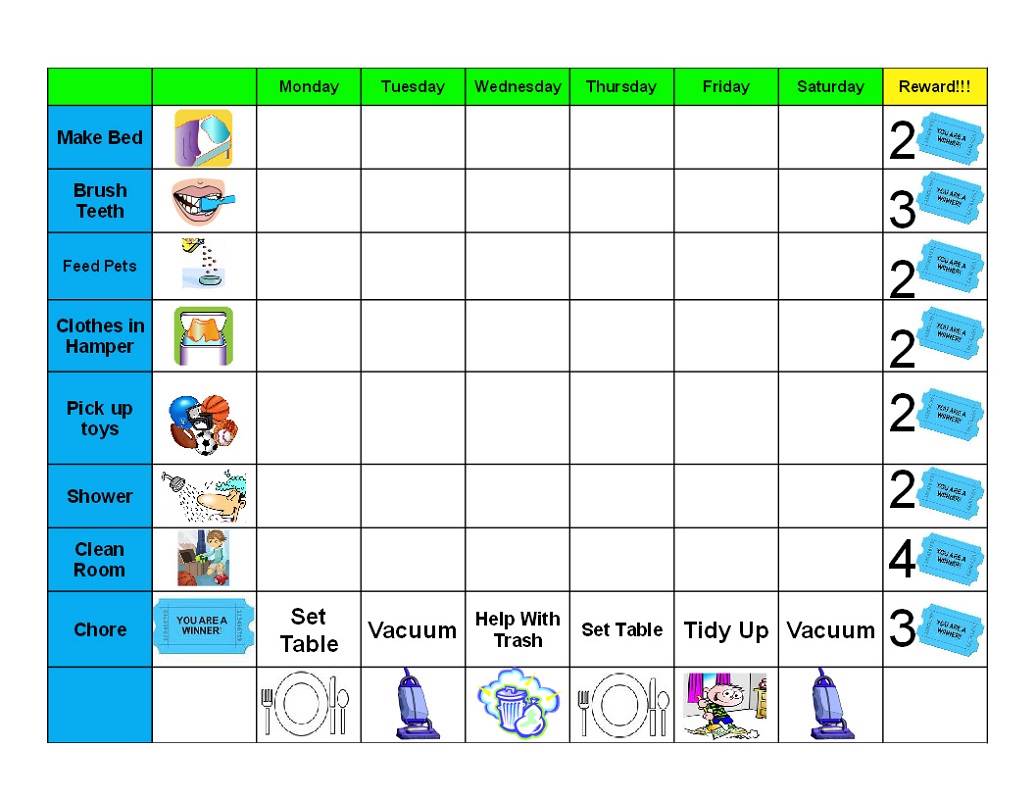
Implementing behavior charts in a home or classroom setting can be an effective way to encourage positive behavior and track progress. Here are some tips to help you use free printable behavior charts effectively:
Setting Clear Expectations and Goals, Free printable charts for behavior
To ensure the success of behavior charts, it is important to establish clear expectations and goals. Clearly communicate what behaviors are expected and the specific goals that need to be achieved. For example, if the goal is to improve homework completion, clearly define what constitutes completing homework successfully.
- Be specific: Avoid vague expectations and goals. Clearly define what behaviors you want to see and what outcomes you expect.
- Involve the child or students: If possible, include the child or students in the process of setting expectations and goals. This will help them take ownership of their behavior and feel more motivated to work towards the desired outcomes.
- Keep it realistic: Set goals that are attainable and realistic. Unrealistic goals can lead to frustration and demotivation.
Tracking and Monitoring Progress
Tracking and monitoring progress is an essential part of using behavior charts. It allows you to assess whether the desired behaviors are being displayed and whether the goals are being met. Here are some tips for effective tracking and monitoring:
- Consistency is key: Use the behavior chart consistently and regularly. This will help establish a routine and make it easier to track progress over time.
- Use a visual representation: Printable behavior charts provide a visual representation of progress, making it easier for the child or students to understand their achievements and areas for improvement.
- Provide rewards and incentives: Consider using rewards or incentives to motivate the child or students to achieve their goals. This can be as simple as stickers or small treats for younger children, or privileges and rewards for older children.
- Regularly review and adjust: Periodically review the behavior chart and assess whether it is effectively promoting positive behavior. Make any necessary adjustments to the goals or expectations if needed.
Remember, behavior charts are just one tool in promoting positive behavior. It is important to also provide praise, encouragement, and guidance to support the child or students in their behavior improvement journey. By using behavior charts effectively, you can create a structured and supportive environment that fosters positive behavior and personal growth.
Customizing and Personalizing Free Printable Behavior Charts

Customizing and personalizing behavior charts is an important step in ensuring they are effective for the child or student using them. By tailoring the charts to fit their individual needs, you can increase motivation and engagement, making behavior management more successful.
If you’re looking for BMW service coupons that you can print out and use, look no further. We have a great selection of printable coupons available for BMW services. Whether you need an oil change, tire rotation, or any other type of maintenance, our coupons can help you save money.
Just visit our website bmw service coupons printable and browse through our offers. Once you find a coupon that suits your needs, simply print it out and bring it to our dealership. It’s that easy! Don’t miss out on these great savings.
Importance of Tailoring Behavior Charts to the Individual
When it comes to behavior charts, one size does not fit all. Each child or student is unique and may respond differently to various strategies. By customizing the behavior chart, you can take into account their specific behaviors, goals, and preferences.
This individualized approach allows you to address their specific needs and challenges, increasing the chances of success.
If you’re looking for a free printable worksheet that is all about you, you’re in luck. We have a fantastic free printable all about me worksheet available for you to download. This worksheet is a fun and creative way to express yourself and learn more about who you are.
It includes sections for you to write about your favorite things, your goals, and even draw a self-portrait. Whether you’re a student looking for a fun activity or an adult wanting to reflect on your life, this worksheet is perfect for you.
So go ahead and download it now, and enjoy exploring yourself!
- Identify specific behaviors: Start by identifying the behaviors you want to target or reinforce. These could be anything from completing homework on time to following classroom rules.
- Set achievable goals: Break down the desired behavior into smaller, achievable goals. This helps the child or student track their progress and experience success along the way.
- Choose appropriate rewards: Consider what motivates the child or student and select rewards that are meaningful to them. This could be anything from stickers to additional privileges.
- Adjust difficulty level: As the child or student progresses, you may need to adjust the difficulty level of the chart. This ensures that they are continuously challenged and motivated to improve.
Adding Personalized Elements to the Charts
Adding personalized elements to the behavior charts can make them more engaging and fun for the child or student. Here are some ideas:
- Use stickers: Allow the child or student to decorate their chart with stickers as they achieve their goals. This adds a visual element and makes the chart more visually appealing.
- Use markers: Instead of simply checking off behaviors, let the child or student use markers to color in or draw symbols next to each goal they achieve. This adds a creative touch to the chart.
- Include their interests: Incorporate the child or student’s interests into the design of the chart. For example, if they love superheroes, use superhero-themed charts or incorporate superhero characters into the design.
- Add a personal touch: Consider adding a photo of the child or student to the chart or allowing them to write their name or a personalized message on it. This helps create a sense of ownership and personal connection.
Remember, the key to customizing and personalizing behavior charts is to involve the child or student in the process. This empowers them and gives them a sense of ownership over their own behavior management. By making the charts visually appealing and tailored to their interests, you can increase motivation and ultimately achieve behavior goals more effectively.
Alternative Behavior Management Tools and Techniques: Free Printable Charts For Behavior
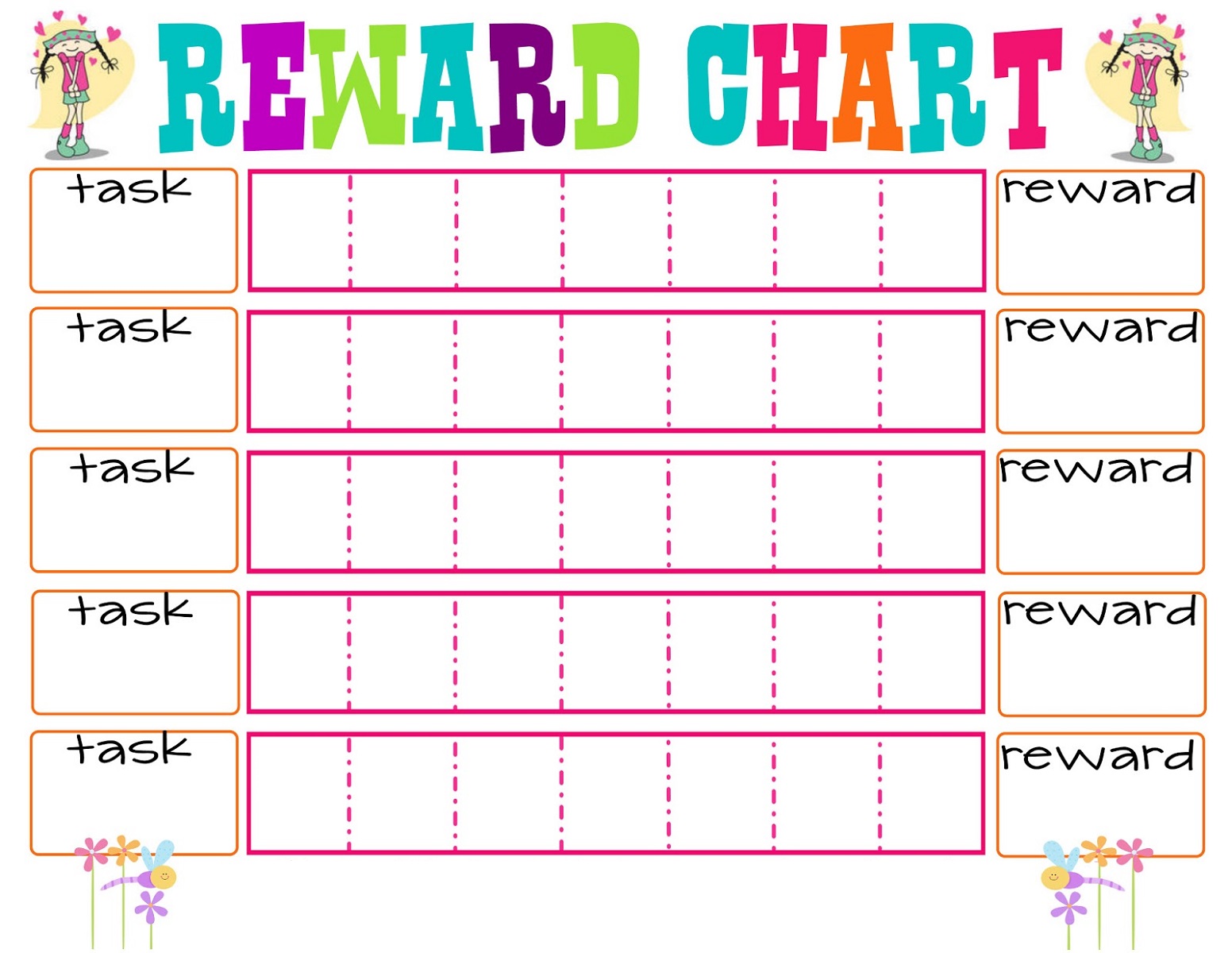
While behavior charts can be effective in promoting positive behavior, there are also other behavior management tools and techniques that can be used in conjunction with or as an alternative to behavior charts. These alternative methods can provide additional support and reinforcement for desired behaviors.
Here are some examples:
Reward Systems
Reward systems are a popular alternative to behavior charts. Instead of using a chart to track behavior, a reward system involves providing tangible rewards or privileges for positive behavior. This can include things like earning points or tokens that can be exchanged for rewards, such as toys, treats, or special privileges.
Reward systems can be particularly effective for younger children who may not fully understand the concept of a behavior chart.
Positive Reinforcement Strategies
Positive reinforcement strategies involve providing praise, recognition, or rewards immediately following a desired behavior. This can help reinforce the behavior and increase the likelihood of it happening again in the future. Examples of positive reinforcement strategies include verbal praise, high-fives, stickers, or small treats.
Positive reinforcement can be used in conjunction with behavior charts to further reinforce positive behaviors.
Token Economy Systems
Token economy systems are similar to reward systems but involve the use of tokens or chips that can be earned for positive behavior. These tokens can then be exchanged for desired rewards or privileges. Token economy systems are often used in schools or therapeutic settings to reinforce desired behaviors.
They can be effective for children with special needs or those who may benefit from a more structured approach to behavior management.
Behavior Contracts
Behavior contracts are written agreements between the child and a parent or teacher that Artikel specific behaviors that need to be addressed and the consequences for not meeting the agreed-upon expectations. Behavior contracts can be effective for older children or teenagers who may benefit from a more formalized approach to behavior management.
They can help establish clear expectations and consequences for behavior.
Social Skills Training
Social skills training involves teaching children specific skills and strategies for interacting with others and managing their behavior. This can include things like teaching problem-solving skills, communication skills, and self-regulation techniques. Social skills training can be particularly beneficial for children who struggle with impulse control or have difficulty managing their emotions.
Comparison with Behavior Charts
While behavior charts can be a useful tool for promoting positive behavior, it’s important to recognize that they may not be effective for every child or in every situation. Some children may become overly focused on earning rewards or may feel discouraged if they are not consistently meeting the desired behavior goals.
In these cases, alternative behavior management tools and techniques, such as reward systems or positive reinforcement strategies, can provide a more individualized and effective approach.
Troubleshooting Common Challenges with Behavior Charts

Using behavior charts can be an effective way to promote positive behaviors and track progress. However, there may be some common challenges that arise when implementing behavior charts. In this section, we will discuss strategies for overcoming these challenges and promoting success, as well as tips for handling resistance or lack of motivation from children or students.
Challenge 1: Inconsistency
One common challenge with behavior charts is inconsistency in implementation. If the rules and expectations are not consistently enforced, the effectiveness of the behavior chart may be compromised. To overcome this challenge, it is important to establish clear and consistent guidelines for using the behavior chart.
This includes setting specific rules and consequences, and ensuring that all caregivers or teachers involved are on the same page. Consistency is key to reinforcing positive behaviors and maintaining the integrity of the behavior chart.
Challenge 2: Lack of Engagement
Another challenge that may arise is a lack of engagement from the child or student. If they are not motivated or interested in the behavior chart, it may not be effective in promoting positive behaviors. To address this challenge, it is important to involve the child or student in the process.
Allow them to have a say in setting goals and rewards, and make the behavior chart visually appealing and interactive. Personalize it to their interests and preferences to increase engagement and motivation.
Challenge 3: Unrealistic Expectations
Setting unrealistic expectations can also be a challenge when using behavior charts. If the goals or targets are too difficult to achieve, it can lead to frustration and demotivation. It is important to set realistic and attainable goals that are age-appropriate and within the child’s capabilities.
Break down larger goals into smaller, manageable steps to make them more achievable. Celebrate small successes along the way to keep the child motivated and encouraged.
Challenge 4: Resistance or Lack of Motivation
Sometimes, children or students may resist using behavior charts or lack the motivation to participate. In these cases, it is important to find alternative ways to promote positive behaviors. Consider using other behavior management tools and techniques, such as verbal praise, rewards, or a token system.
It may also be helpful to have open and honest conversations with the child or student to understand their concerns or reasons for resistance. Adjust the behavior chart or rewards system accordingly to better align with their needs and interests.Remember,
behavior charts are just one tool in promoting positive behaviors. It is important to create a supportive and nurturing environment that encourages and reinforces good behavior. By addressing common challenges and implementing effective strategies, behavior charts can be a valuable tool in promoting positive behaviors and tracking progress.
